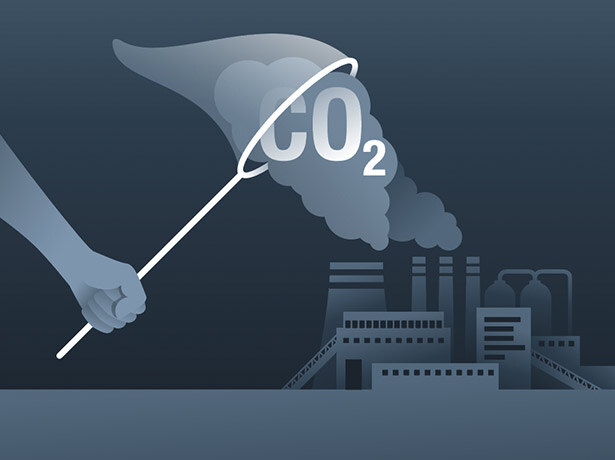Carbon capture, utilization and storage (CCUS), a process that captures carbon dioxide (CO2) formed during power generation and industrial processes, preventing it from entering the atmosphere, is gaining momentum and making headlines. The technology, which has been in use since 1972 in the United States, is a growing part of the effort to address the climate change crisis and meet climate goals laid out by the 2015 Paris Agreement.
In January, Elon Musk pledged to donate $100 million prize to whoever can develop the best way to capture carbon. This was followed by ExxonMobil announcing in early February the creation of a new business, ExxonMobil Low Carbon Solutions, to commercialize and deploy carbon reducing technologies. The new business will initially focus on carbon capture and storage, including advancing plans for more than 20 new carbon capture and storage projects and investing $3 billion on lower emission energy solutions through 2025.
The International Energy Agency also highlighted growing momentum for the technology, recently reporting that plans for 30 new carbon capture, utilization and storage (CCUS) have been announced since 2017.
The technology is also garnering U.S. presidential support. A recent Reuters article noted that President Joe Biden has pledged to accelerate the development of carbon capture technology as part of his plan to tackle climate change and recently named Jennifer Wilcox, an expert in carbon removal technologies, as the principal deputy assistant secretary for fossil energy at the U.S. Department of Energy.
CCUS significantly reduces emissions from a number of important sectors, including the steel, cement, chemicals and refining industries and is considered one of the few solutions that can remove CO2 from the atmosphere at an industrial scale. The technology can permanently store carbon by injecting it into rock formations deep underground or enable the carbon to be used in industrial processes, converting it into things like plastics, concrete or biofuel.
It will take the collective efforts of industry and government coupled with the deployment of a wide range of technologies to stave off the most serious impacts of climate change and keep global warming below 2.7° Fahrenheit (1.5° Celsius).
While CCUS is expected to play a key role in the transition to a net-zero energy system, it is only one part of a larger ecosystem of solutions and initiatives aimed at mitigating climate change. Solutions such as increasing energy efficiency, increasing the use of renewable energy, electrifying transportation, and reforesting regions can all help keep temperatures down. It is also critical to focus on embodied carbon, which cannot be mitigated at a later date. As we reduce the amount of carbon produced to manufacture and transport materials for the built environment, we contribute positively toward reducing global warming.
Kingspan is leveraging a broad range of advanced materials, building systems and digital technologies to help stem the tide of climate change through our Planet Passionate program. This 10-year sustainability program is aimed at doing our part to move to a clean energy future, manage the Earth’s resources more sustainably and protect our natural environment.
We have a long way to go in the race against climate change. According to the National Oceanic and Atmospheric Administration (NOAA), global atmospheric carbon dioxide reached 409.8 parts per million in 2019, a new record high and the highest levels in 800,000 years. We are seeing the impact of this in rising sea levels, devastating hurricanes and other climate extremes. And without dramatic action it will only get worse. How much worse? World Economic Forum scientists are saying Antarctica’s melting ice sheet could wipe out entire nations.
The clock is ticking…


